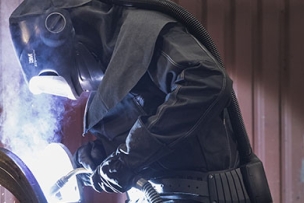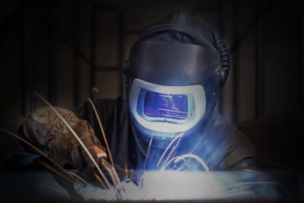Products that work as hard as you do. From the most basic to the most specialized needs, 3M offers the health and safety protection you and your workers need most, so everyone can perform at their best. We strive to deliver comfortable, well-designed personal protective equipment (PPE) that offers your workers the most effective protection available.
UPDATE: A new final rule for the Beryllium standard has been published by U.S. OSHA.
The final rule amends the following paragraphs of the standard for general industry: ‘Definitions,’ ‘Methods of Compliance,’ ‘Personal Protective Clothing and Equipment,’ ‘Hygiene Areas and Practices,’ ‘Housekeeping,’ ‘Medical Surveillance,’ ‘Hazard Communication’ and ‘Recordkeeping.’ There is also a new Appendix A: ‘Operations for Establishing Beryllium Work Areas.’
The compliance date of this final standard as modified is September 14, 2020 and U.S. OSHA predicts it will affect approximately 55,000 workers. OSHA has been enforcing most of the provisions for general industry since Dec. 12, 2018. The agency began enforcing the provisions for change rooms and showers on March 11, 2019, and engineering controls on March 10, 2020.
The following is a summary of the previous rule changes with information about Beryllium.
On January 9, 2017, the U.S. Occupational Safety and Health Administration (OSHA) published a final rule concerning beryllium and beryllium compounds.
Beryllium is a metal used in a variety of applications, such as welding, which commonly occurs in industries such as aerospace, aviation, shipbuilding, construction and other types of heavy manufacturing. OSHA estimates that roughly 62,000 workers in 7,300 workplaces across the U.S. may be exposed to beryllium. Many of the new limits went into effect in May of 2018 and the majority of the other provisions of the regulation changes went into effect in June of 2018.
What is Beryllium?
Beryllium, a metal that is stronger than steel and lighter than aluminum, is used commonly as an alloy with copper, aluminum, magnesium or nickel. It is used in many applications because of its high heat capacity. The high heat necessary to form it can lead to the generation of extremely small particulates known as fumes. Also, grinding on beryllium-containing materials can release fine beryllium-containing dusts into the air.
Worker exposures to beryllium can occur in many types of ways, such as in foundry and smelting operations; fabricating, machining, and grinding beryllium metal and alloys; beryllium oxide ceramics manufacturing; and dental lab work. Workers at coal-fired power plants may also encounter beryllium when handling fly ash residue from the coal burning process. Additionally, in the construction and shipyard industries, abrasive blasters and support personnel may be exposed to beryllium from slags.
According to OSHA, workers who have been exposed to beryllium can be at an increased risk of developing chronic beryllium disease (CBD), berylliosis and lung cancer. OSHA states that the final rule changes are meant to help prevent beryllium sensitization that can lead to CBD, lung cancer and other ailments in workers resulting from beryllium exposure.
As part of this final rule, OSHA issued three separate standards – for general industry, for shipyards, and for construction – in order to tailor requirements to the circumstances found in these sectors. OSHA has identified that welding is one of the main processes that is affected by this new beryllium rule.
What Changes are Now in Effect?
On May 9, 2018, OSHA issued a memorandum providing additional information for what sections of the standard they were going to enforce on May 11, 2018. The provisions reduce the Permissible Exposure Limit (PEL) over an eight-hour period and establish a new 15-minute Short Term Exposure Limit (STEL). Specifically, they create:
-
A new PEL of 0.2 micrograms of beryllium per cubic meter of air (0.2 μg/m3) as an 8-hour time-weighted average (TWA). This means the acceptable limit is down 90 percent from the former TWA of 2.0 μg/m3 and replaces the PEL that has been in place for more than 40 years. Since the acceptable exposure level has been lowered considerably, you may need to reevaluate your respiratory protection program and equipment choices to make sure your workers are adequately protected.
- A new STEL of 2.0 μg/m3, as determined over a sampling period of 15 minutes. This means the amount of beryllium a worker can be exposed to in a short period of time has also gone down considerably, and you should make changes to your controls and equipment to ensure you are complying and your workforce is protected.
Because of these changes to the exposure levels, employers have requirements that they must meet, including:
- What must be done in terms of exposure assessments, developing a written exposure control plan and notifying employees of the results – see 29 CFR 1910.1024(d)
- What types of respiratory protection must be offered – see 29 CFR 1910.1024(g) (see below)
- Changes that need to be made to medical surveillance programs in general industry – see 29 CFR 1910.1024(k)
It is also important to note that starting on June 25, 2018, the following changes also went into effect for general industry:
- Personal protective clothing and equipment (see below)
- Limiting worker access to high-exposure (“Regulated”) areas
- Housekeeping
- Hazard communication
- Recordkeeping
- Training on beryllium hazards
Respiratory Protection
For the general industry, as defined by OSHA, a provision in the final rule requires that an employer provide a powered air-purifying respirator (PAPR), instead of a negative-pressure respirator, where respiratory protection is required by the rule and the employee requests a PAPR. This type of protection must now be supplied if a PAPR provides adequate protection for employees in general industry, including welding and metalworking. Therefore, employers should reevaluate their respiratory protection equipment and make all required respiratory protection program changes to be compliant.
Employers might want to consider adopting an integrated system that includes PAPRs with headgear options. Some of these integrated options provide protection for multiple hazards. For welders, this could include welding helmets that have auto-darkening filters, hard-hat protection, integrated grinding shields for eye impact hazards and also have attachments for connecting earmuffs to the helmet.
Keep in mind, since the engineering controls requirements do not need to be implemented to comply with the OSHA PEL until March 10, 2020, employers must use other controls, including respiratory protection, until the engineering controls are implemented.
Personal Protective Clothing and Equipment
The final rule, which became effective on June 25, 2018, also requires use of protective clothing and equipment where employee exposure exceeds, or can reasonably be expected to exceed, the new limits set by the standard (TWA PEL or STEL), or where there is a reasonable expectation of dermal contact with beryllium.
Additional Important Effective Dates
Unless it provides notice, OSHA will not enforce any other provisions contained in general industry standard for beryllium 1910.1024 until after the June 25, 2018, date. And, unless it provides notice, OSHA will only enforce the exposure limit provisions contained in the other beryllium standards for construction (1926.1124) and shipyards (1915.1024). Also, due to the terms of settlement agreements reached with petitioners challenging the rule, OSHA proposed to extend the compliance dates of certain other requirements until December 12, 2018.
Protect Against Weld Fume Hazards
It’s also important to remember that beryllium is not the only metal fume by-product that can produce potentially harmful health effects from welding fume exposure. Hexavalent Chromium Cr(VI), a specific chemical form of chromium, can be created during welding on stainless steel, as well as non-ferrous alloys. In addition, OSHA has also identified that prolonged exposure to manganese fume can have serious health effects. The scientific and medical aspects associated with the respiratory hazards from welding is an emerging area of importance, and certainly bears watching for future developments.
Overall
There are a lot of changes occurring with respect to the science surrounding substances that arise in welding, such as beryllium. In light of the emerging scientific, medical and regulatory advancements, it may be time to reevaluate your PPE program (most notably, respiratory PPE) to make sure you are protecting your workers from exposure to these contaminants.
3M's Center for Respiratory Protection has a wide variety of resources to help you, including information to help you conduct your assessment and select the products you need to help protect against the hazards you are exposed to at your work site.
Publisher’s Note: This blog was first published on August 10, 2018 and has been amended since the rule has new changes published on July 13, 2020.
Previously Featured on 3M's blog.










Talk to Us!
Leave a reply
Your email address will not be published. Required fields are marked *